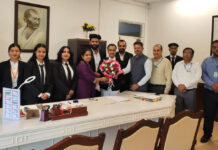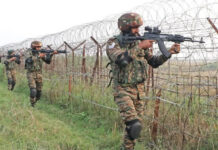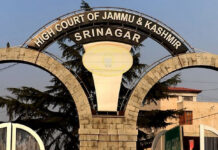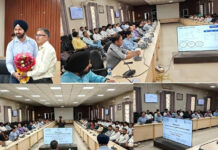The proactive steps taken to ensure the safety of the Amarnath Yatra highlight the Jammu and Kashmir administration’s commitment to protecting pilgrims. Every year, thousands of devotees embark on this sacred journey to seek blessings at the holy cave shrine of Baba Amarnath. However, the challenging terrain and unpredictable weather pose significant risks to their safety. The tragic incident last year, when several devotees lost their lives due to a sudden cloudburst, raised serious concerns about the preparedness of the administration. The incident led to widespread criticism and demands for better planning. Fortunately, the Amarnath Shrine Board and the UT administration have learned from past experiences and are now taking early and necessary measures to ensure a safer pilgrimage. Recently, Chief Secretary Atal Dulloo directed the Deputy Commissioners of Ganderbal and Anantnag districts to identify disaster-prone areas along the yatra route. The Amarnath Yatra path is known for its treacherous conditions, with many locations susceptible to cloudbursts, landslides, and falling rocks. Every year, there are unfortunate incidents where pilgrims get seriously injured or even lose their lives due to these natural disasters. Identifying hazardous zones and ensuring that no tents or camps are set up in such areas can significantly reduce the chances of accidents. This step is crucial, as timely intervention can help prevent loss of lives. In recent years, the government has undertaken various initiatives to improve the pilgrimage experience, including the widening of the yatra route and the installation of better infrastructure. However, despite these efforts, much remains to be done. The increasing number of devotees each year necessitates enhanced security, medical assistance, and emergency response measures. It is reassuring that the administration has already started preparations well in advance, ensuring that any potential risks are mitigated before the commencement of the yatra. Additionally, the Shrine Board must address the concerns of langar (community kitchen) organizers, as they play a crucial role in providing food and refreshments to the pilgrims. The smooth functioning of these facilities is essential for a hassle-free pilgrimage. Proper coordination among various departments, including security forces, health services, and disaster management teams, is necessary for ensuring the safety and convenience of devotees. With a well-planned and systematic approach, the administration can prevent mishaps and reinforce public confidence in the management of the yatra. By prioritizing safety, infrastructure improvements, and efficient organization, the Amarnath Yatra can be made a secure and spiritually fulfilling experience for all devotees.

Dogra Herald is the media of J & K, breaking language and geographical barriers, connecting J & K to the rest of India.
0191 245 4946
info@dograherald.com
Latest articles
LG Manoj Sinha calls on Dr Jitendra Singh
iamjkstarr - 0
Lieutenant Governor of Jammu & Kashmir, Manoj Sinha, currently on a visit to the Union Capital, today called on Union Minister Dr Jitendra Singh...
Cabinet approves setting up of 75 new medical colleges by 2021-22
iamjkstarr - 0
The Union Cabinet has approved setting up of 75 new Medical Colleges by 2021-22. The move will add 15,700 more MBBS seats in the...
DC Ganderbal discusses MGNREGA Convergence Plan 2024-25
DOGRA HERALD BUREAUGANDERBAL, Feb 3In a bid to boost developmental initiatives in the district, Deputy Commissioner (DC) Ganderbal, Shyambir Saturday presided over...




























